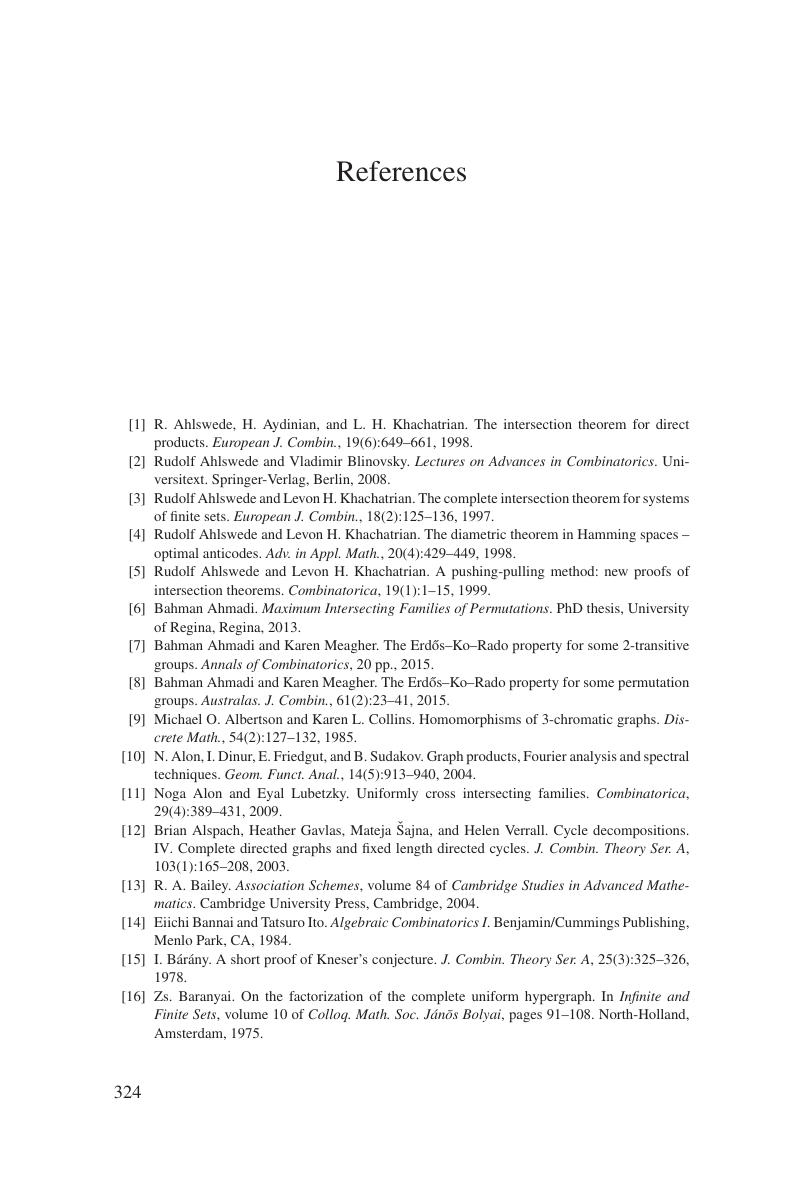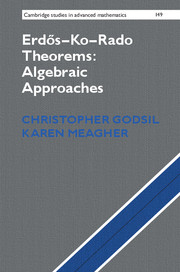Book contents
- Frontmatter
- Dedication
- Contents
- Preface
- 1 The Erdős–Ko–Rado Theorem
- 2 Bounds on cocliques
- 3 Association schemes
- 4 Distance-regular graphs
- 5 Strongly regular graphs
- 6 The Johnson scheme
- 7 Polytopes
- 8 The exact bound in the EKR Theorem 135
- 9 The Grassmann scheme
- 10 The Hamming scheme
- 11 Representation theory
- 12 Representation theory of the symmetric group
- 13 Orbitals
- 14 Permutations
- 15 Partitions
- 16 Open problems
- Glossary: Symbols
- Glossary: Operations and relations
- References
- Index
- References
References
Published online by Cambridge University Press: 05 December 2015
- Frontmatter
- Dedication
- Contents
- Preface
- 1 The Erdős–Ko–Rado Theorem
- 2 Bounds on cocliques
- 3 Association schemes
- 4 Distance-regular graphs
- 5 Strongly regular graphs
- 6 The Johnson scheme
- 7 Polytopes
- 8 The exact bound in the EKR Theorem 135
- 9 The Grassmann scheme
- 10 The Hamming scheme
- 11 Representation theory
- 12 Representation theory of the symmetric group
- 13 Orbitals
- 14 Permutations
- 15 Partitions
- 16 Open problems
- Glossary: Symbols
- Glossary: Operations and relations
- References
- Index
- References
Summary

Information
- Type
- Chapter
- Information
- Erdõs–Ko–Rado Theorems: Algebraic Approaches , pp. 324 - 331Publisher: Cambridge University PressPrint publication year: 2015
